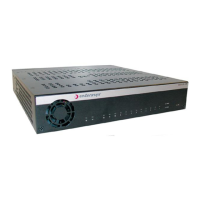PoE (Power over Ethernet) Support
Enterasys D-Series Hardware Installation Guide 1-5
PoweroverEthernet(PoE)referstotheabilitytoprovide48Vdcpowertoapowereddeviceusing
thesameEthernetcablingthatprovidesdata.ModernEthernetimplementationsemploy
differentialsignalsovertwistedpaircables.Thisrequiresaminimumoftwotwistedpairsfora
singlephysicallink.Bothendsof
thecableareisolatedwithtransformersblockinganyDCor
commonmodevoltageonthesignalpair.PoEexploitsthisfactbyusingtwotwistedpairsasthe
twoconductorstosupplyadirectcurrent.Onepaircarriesthepowersupplycurrentandtheother
pairprovidesapathfor
thereturncurrent.Whileseveralproprietarylegacyimplementationsof
PoEhavebeendeployedbyLANequipmentvendors,in2003theIEEEpublishedtheIEEE802.3af
specification,whichispartofthe802.3suiteofstandards.
TheswitchisfullycompliantwiththeIEEE802.3afstandard.Itsupportsthestandard
resistor‐based
detectionmethod,aswellas ACdisconnectcapability.
Whenoperatingat40°Corless,theswitchsupports anaverageof8.3WPoEpowerperport.It
providesupto15.4WforClass3supportonanyport,uptoasystemmaximumof100watts.Total
systemPoEpowerdecreases2.16W
per°Cincreaseover40°C.
Powered Device Classifications (PDs)
PDsaredevicesthatreceivetheiroperating48VdcpowerthroughaneworexistingEthernet
cablefromaswitchorotherdevicethatcanprovideaPoE‐compliantportconnection.This
enablesthePDtooperateinalocationwithoutlocalpower.Forexample:
• DevicessuchasPoE‐compliantremote
EXITsignsandPersonalDataAssistants(PDAs),
• DevicesthatsupportVoiceoverIPsuchasPoE‐compliantdigitaltelephones,
• DevicesthatsupportWirelessApplicationProtocol(WAP)suchassecuritycameras,laptop
PCs,andmanymoredevices.

